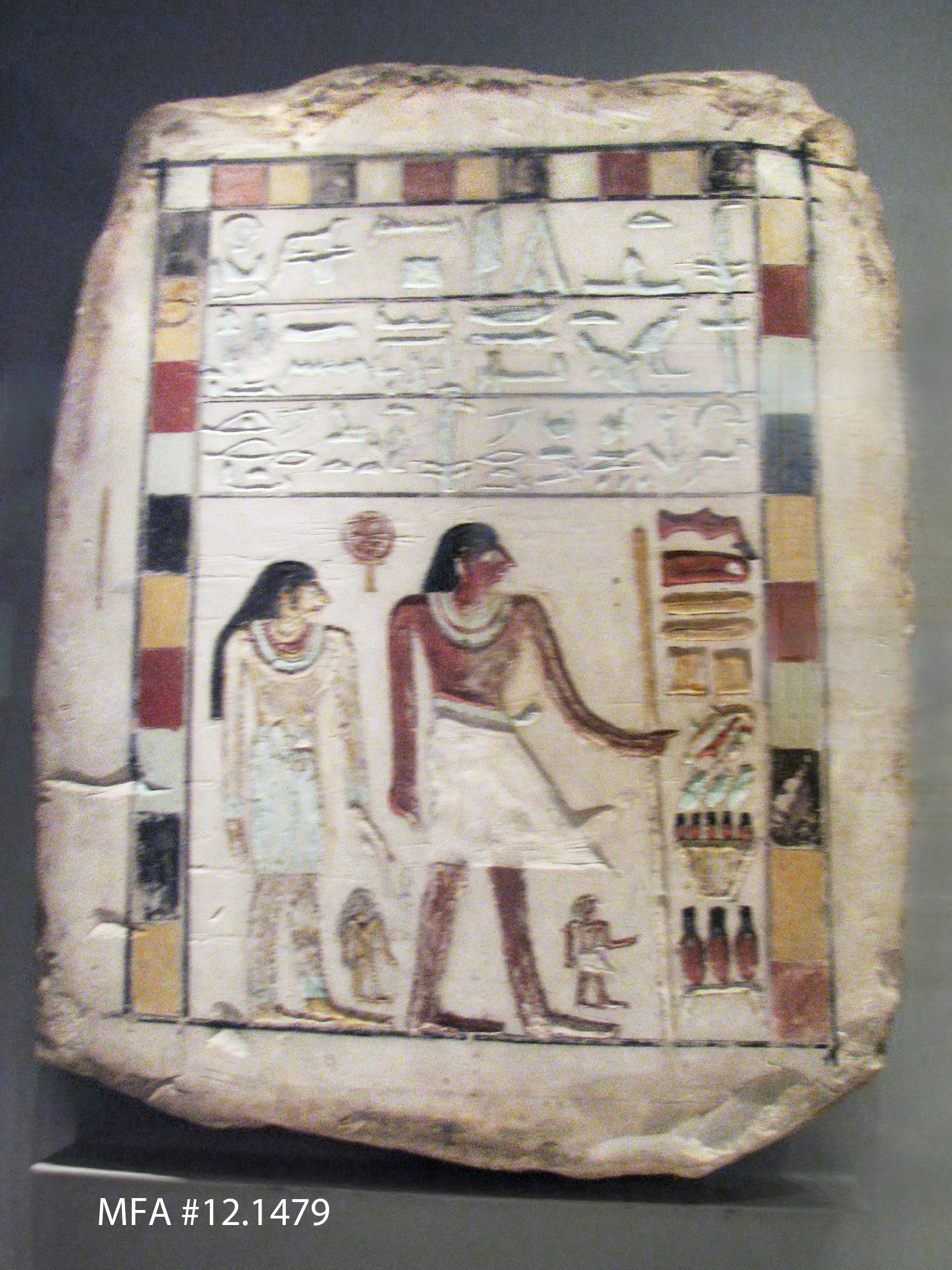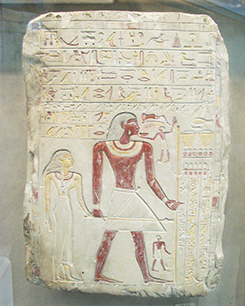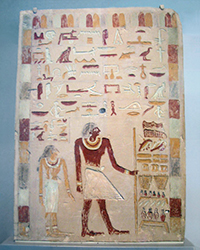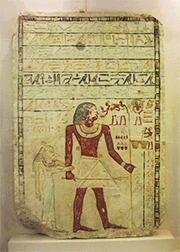|
"This stele, originally from a small mud-brick tomb at Mesheikh in central Egypt, depicts an official named Wadjsetji with his wife, Merirtyef, and their two children. They face a tall pile of food offerings, and the text above them contains a prayer addressed to the funerary god Anubis. The brightly colored figures, with their large eyes, pointy noses, and excessively long arms, are typical of sculpture from this region." (From info card)
A mirror is in front of Merirtyef. Later on, in the Middle Kingdom, she would have likely been depicted holding the mirror, as the woman is in the stela of Dedu and Sitsobek at the Met museum.
Inscription
(1) "An offering which the king gives, (and) Anubis, who is upon his mountain, (2) who is in the place of embalming, lord of the necropolis, that offerings be invoked for the sole companion (3) Wadjsetji. His wife, his beloved, the sole royal ornament Merirtyfy (?)." under ultraviolet light can be seen the names of two small figure, "Inheret" and "Ibu." (Leprohon) (From museum website)
Note the similarity between this piece and other First Intermediate pieces, one at the Met Museum, one at the Brooklyn Museum and one at Chicago's Oriental Museum:
|






